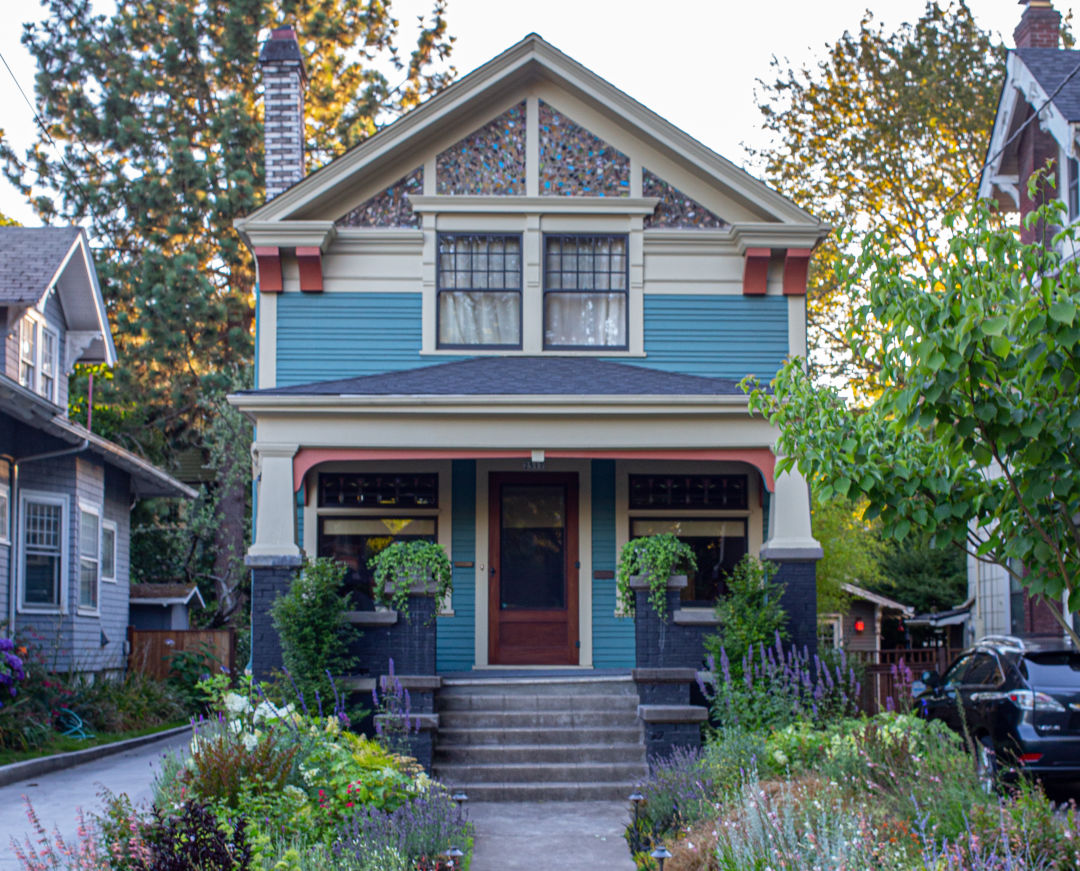Will City Council's Vote on Historic Neighborhoods Help Address Our Housing Crisis?

A craftsman house in historic Irvington.
Image: Michael Novak
Some of Portland’s most desirable neighborhoods enjoy the benefits of being on the National Register of Historic Places: no demolitions, no McMansions or endless rows of boxy condos. It also often means no new and affordable housing.
All that could change due to a proposal being considered by Portland City Council starting this week, intended in part to address the region’s major housing shortfall, especially when it comes to affordable housing.
Under the proposed updates in the Historic Resources Code Project, developers would be able to demolish structures in several more situations, including in single-dwelling zones on federally designated historic districts on the National Register—but only if the demolition of the building could create housing that is more affordable or for more people. (The full draft of the Historic Resources Code Project clocks in at a hefty 262 pages, and also includes revisions to the city's processes for selecting historic districts in the first place.)
It’s not just about pretty old houses. A long pattern of both racially explicit and implicit policies shaped Portland’s housing landscape from the start—racial covenants in the early 20th century effectively banned people of color from owning land, building wealth, or even residing in certain parts of Portland, like Ladd’s Addition and the Southwest Hills.
In the latter half of the 20th century, lower-cost housing like apartments and duplexes were banned in more than 70 percent of the city’s residential land, and, until the legislature passed an inclusionary zoning law in 2016, there was a statewide ban on cities requiring developers to create at least some affordable housing in their projects.
The HRCP and its potential amendments are just the latest in a series of zoning changes designed to make the city more affordable for more people. Passed by city council in August 2020 and taking effect in August 2021, the somewhat controversial Residential Infill Project encouraged the construction of many more duplexes (and triplexes and fourplexes) in parts of Portland that they weren’t previously allowed. Despite these changes, though, there are some neighborhoods that are still effectively exempt from infill: historic districts.
As with other older, close-in neighborhoods, many of the historic districts—including Ladd’s Addition, Laurelhurst, and Irvington—have at least some policies of exclusion in their pasts. When neighborhoods like that are protected from change, they’re preserving that same exclusion, says Luke Norman, equitable zoning co-lead for housing reform group Portland: Neighbors Welcome.
“Historic preservation isn’t inherently racist, but, intentionally or not, it has been used by some districts in racist ways,” says Norman. “Our historic codes should honor our diverse history, not enable our whitest neighborhoods to stay exclusionary.”
Currently, it takes a long and complex process involving the Portland Planning and Sustainability Commission and the Historic Landmarks Commission, plus a vote from city council, to tear down a “contributing building” in a historic district (meaning any building deemed to add to the district’s historic designation), in a process called demolition review.
Norman's group wants to retain demolition review for local historic districts, which are subject to city council control, but alter it for National Register districts, which are created independently of local or state government. It's recommending an amendment that would allow demolition in National Register districts in the most possible cases per state law. When it comes to districts on the National Register, which tend to be closer in, well served by transit, and highly walkable, such a change could make housing in those areas more accessible for middle-income families and first-time homebuyers.
But housing advocates say a lot of development in a neighborhood can also inflate property values and contribute to gentrification and displacement. This was a prominent fear during hearings for the Residential Infill Project, with an eye turned toward lower-income neighborhoods like Lents and Montavilla. It could also be cause for concern in conservation districts with larger BIPOC populations like Mississippi Avenue. (The city defines conservation districts as “geographic areas that are significant at the neighborhood level and regulated with more flexible historic resource protections than historic districts," meaning they have fewer protections against demolition and redevelopment.)
Some council watchers are skeptical of how affordable new developments in historic districts would actually be. Developers of affordable housing, who won’t recoup costs through high rents, often want to get the most bang for their buck, usually through grants, subsidies, and tax benefits. So they might find it makes more sense to develop in areas with lower property values—not historic districts.
Another point of contention lies around the city’s democratic oversight of demolitions, specifically with the Historic Landmarks Commission, a city-appointed group of seven that helps oversee historic buildings and districts. Part of the Historic Resources Code Project would expand exactly who can be on the commission and approve new developments. Right now the rules are rather tight, requiring a local historian, an architectural historian, and an architect, plus four more members with relevant expertise.
The HRCP would nix those rules and instead allow the mayor to appoint members to the Historic Landmarks Commission with less direct expertise on issues of historic preservation. The new language includes anyone with “professional experience and knowledge in one or more of the following categories: historic preservation, local history, architectural history, architecture, landscape architecture, real estate, economics, construction, community development, urban planning, archeology, law, finance, cultural geography, cultural anthropology, cultural resources management, or related disciplines” as long as they have a “demonstrated interest, competence, or knowledge of historic preservation.” (In the proposed rules, there could also be up to two at-large members, and no more than two of the seven members “may be in the business of buying, selling, leasing, or developing real estate for profit.”)
Requiring only a “demonstrated interest” raises concerns for John Liu, a lawyer and previous Laurelhurst Neighborhood Association board member. “You could have a seven-person Historic Landmarks Commission, in which two people are at-large members and the rest are real estate brokers, lawyers, bankers, and contractors,” he says of the proposed changes. “There’s actually no requirement that a single person on the HLC be a recognized expert in architectural history.”
Interest in the potential changes is high. A midday, midweek city council hearing on November 3 had more than 100 people signed up to offer testimony. A vote is expected later this year.




